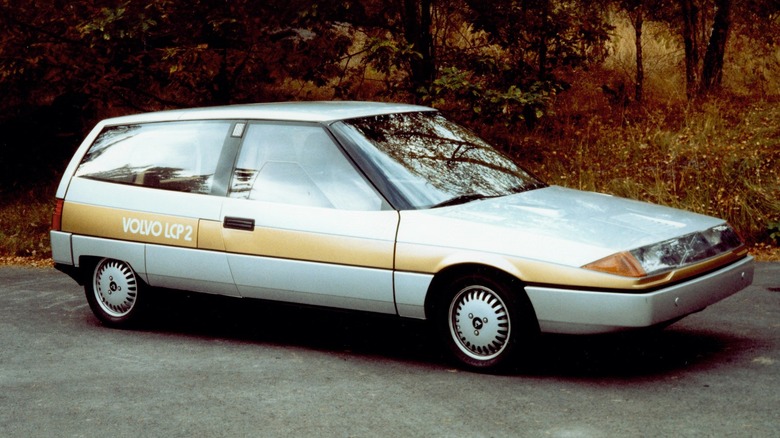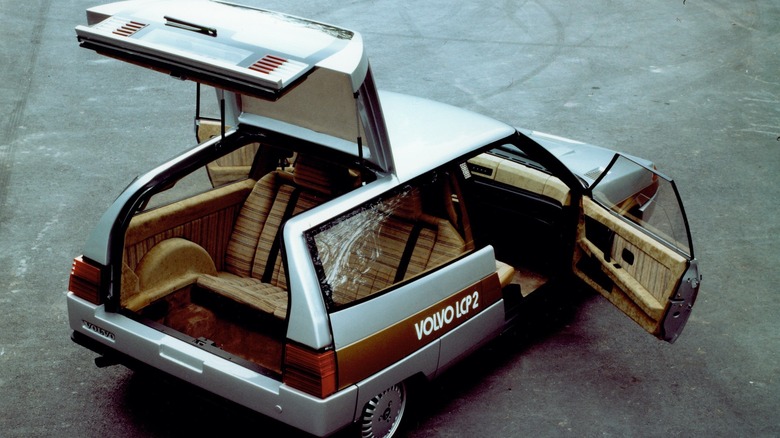This Strange Looking Volvo Concept Car Was More Advanced Than It Looks
Back in 1983, Cabbage Patch Dolls were at the top of every kid's Christmas list, the final episode of M*A*S*H bid farewell to a record viewing audience (that still stands), and a Jedi returned to movie theaters. Gearheads could buy a Toyota Celica Supra for $14,198, a Porsche 944 for $18,980, or a convertible Ford Mustang GT 5.0 for $9,702 and only pay $1.16 for a gallon of gas to power them.
It's also the year Volvo rolled out four LCP 2000 concept cars. The LCP, which stood for "Light Component Project," was designed to be lightweight using advanced materials like aluminum, magnesium, plastic, and carbon fiber to make a fuel-efficient, safe, and drivable "car of the future," one that might be seen on the roads in the year 2000.
The project started in 1979, though, when such materials were incredibly expensive and used almost exclusively on race cars, not passenger cars. The brass at Volvo asked its design team to come up with a car that seated at least two people, had a curb weight of fewer than 1,543 pounds, and got at least 59 miles per gallon. In '79, this was a Herculean task for a passenger car design team to pull off.
The idea came from an amalgamation of an electric car concept and another lightweight car concept Volvo had worked on called Ellen. The team was led by engineer Rolf Mellde, who'd worked on the previous electric car design a few years earlier.
The LCP 2000 was a concept ahead of its time
In 1983, Volvo unveiled four versions of the LCP 2000 at an environmental summit in Stockholm. Each had slightly different technical and mechanical setups. For instance, two different three-cylinder transverse turbodiesel engines were used. One was a 1.3-liter 50 hp lightweight magnesium engine, the other a cast-iron 1.4-liter 90 hp engine.
This cast iron engine was odd because it was wrapped in a cooling jacket that actually used the engine oil as a coolant. Even more bizarre (especially for the time), these engines could run on an array of fuels, like low-octane gasoline, rapeseed oil, and even sunflower oil. The EPA was able to eke out 56 mpg in the city and an incredible 81 mpg on the highway during testing. It could go from 0-to-60 in 11 seconds and had a top speed of 110 mph.
The car's shape was also quirky, sporting an aerodynamic wedge shape (with a drag coefficient of 0.25) to help with fuel efficiency. The two-door hatchback had a plastic tailgate that included nearly half of the roof and swung up high so passengers could clamber into the rear without contorting their bodies to sit in a backward-facing bench seat. This feature was included to save space as well as bolster safety.
The LCPs sat on an all-aluminum chassis with magnesium subframes, and even sported carbon fiber door frames, a wholly new and untested material at the time. All four vehicles were fitted with front-wheel drive, but a 5-speed manual transmission was used in some, while an electronically controlled continuously variable transmission (CVT) was used in others.

